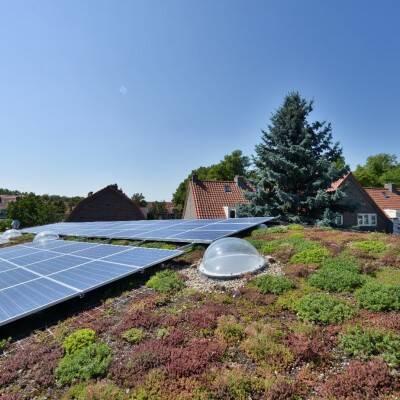Sustainable building materials
Building materials such as copper, zinc and lead, as well as roofing materials such as bitumen, can leach. This means that substances from (building) materials slowly dissolve in rainwater runoff, among other things. The substances can reach the surface water and are harmful to the environment. Today, therefore, only sustainable (CE-marked) building materials may be used. Even in older homes, the rainwater can usually be disconnected without any problems because the leaching of building materials decreases over time. Only with asbestos roofs is disconnection discouraged. The municipal disconnection advisor can advise on this.

Cost
Sustainable construction is not necessarily more expensive than unsustainable construction. Through different construction methods and use of materials, sustainable construction can sometimes be cheaper.
Difficulty
It is advisable to be advised on the use of sustainable building materials
Flooding
Green roofs and certain types of paving can retain rainwater or slow down stormwater runoff.
Heat stress
Using sustainable materials and constructing green roofs ensures a cooler home in the summer.
Water Quality
Use only certified building materials when replacing gutters and decking. This prevents harmful substances from polluting our ground and surface water.
Tips
- Choose sustainable building materials or opt for a natural roof, a retention roof or a sedum roof. With a green roof, you will also have less heat in the home and contribute to increasing biodiversity.
- Sustainable buildings are more energy efficient to operate and often are healthier for occupants and users.
- Learn moreRijksoverheid)
- More information (InfoMil)